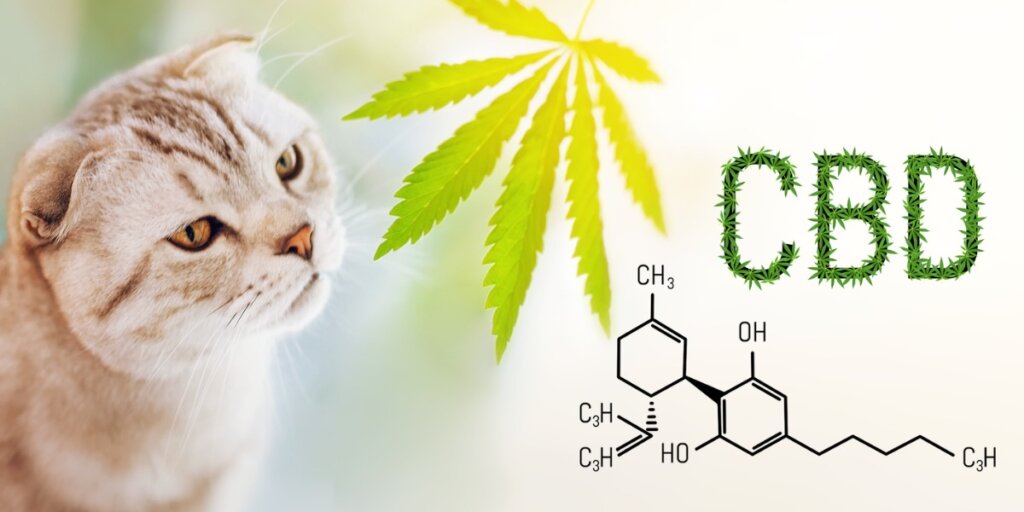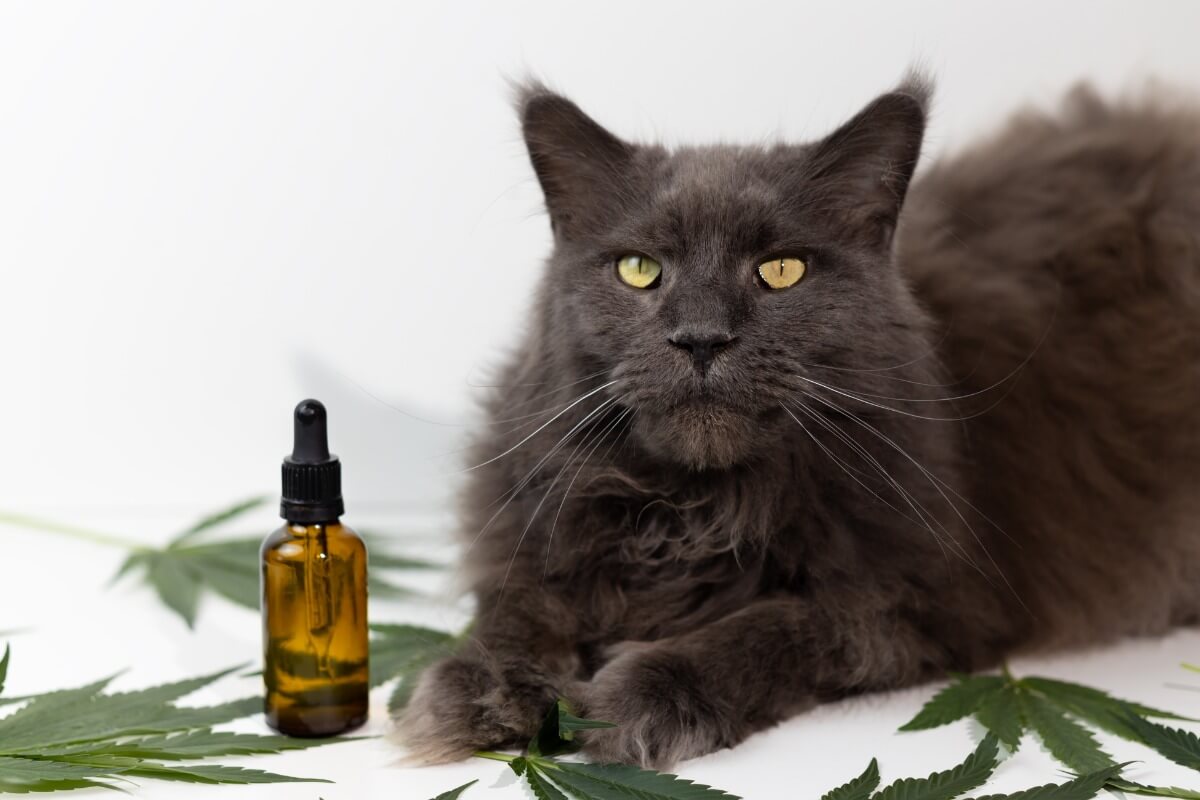CBD in Cats: Safety and Uses

The non-recreational use of cannabinoids is becoming more and more widespread among humans, but also among pets. An example of this is the use of CBD in cats, a substance that provides the beneficial effects of cannabis (muscle relaxation, anxiety reduction, analgesia, etc.) without the psychotropic additives of this plant.
However, and before administering any treatment to your feline, it’s very important to find out more about its use, composition, effects, and dangers. In this article you’ll have all the information you need about CBD, so don’t miss it.
What is CBD?
CBD, or cannabidiol, is an active compound present in the hemp plant (Cannabis sativa) that’s used to improve the symptoms of various conditions, such as stress, pain and inflammation. It’s one of more than 100 cannabinoids present in this plant.
Because CBD doesn’t produce psychotropic effects, its use has become popular among people, and now among pets. However, research is still being carried out when it comes to cats, as it’s currently used more in dogs, and always carefully controlled.
Differences between CBD and THC
It’s very important not to confuse hemp, from which cannabidiol is extracted, with marijuana. Although both substances are obtained from the same plant species, there are many varieties depending on the intended use.
People extract tetrahydrocannabinol, or THC, from the marijuana plant, which is a component with psychoactive effects that’s mainly consumed for recreational purposes. CBD, on the other hand, is obtained from the hemp plant, another variety of the cannabis plant, whose uses are therapeutic or industrial in nature.

How does CBD work in cats?
Cats, like humans and many other animals, have a rather complex method of intercellular communication called the endocannabinoid system or ECS. This organic complex is composed of three distinct parts:
- Internal cannabinoids: These are substances created by the body that act as neurotransmitters, i.e. they activate nerve connections within the ECS.
- Receptors: Internal cannabinoid receptors react to these substances and release others accordingly. They’re located throughout the body.
- Enzymes: Substances released by receptors upon contact with internal cannabinoids. These proteins are involved in the physiological regulation of the body – homeostasis.
CBD provides an advantage within this system over THC, as it doesn’t bind directly to receptors. In this way, direct effects on behavior and perception are avoided without losing the therapeutic benefits of its application.
Uses of CBD in cats
In recent years, the success of CBD therapies in dogs has led to attempts to expand its use to domestic felines. So far, this substance has been shown to be effective in treating the following problems:
- Chronic pain: Pain caused by diseases such as cancer or incurable pathologies (irritable bowel syndrome, discomfort resulting from irreversible kidney failure, and more) often responds well to the effect of CBD.
- Anxiety: Due to its calming effect, many owners use CBD to give pharmacological support to their cat during stressful events, such as car trips or moving house.
- Inflammation: Cannabidiol is used to alleviate ailments such as arthritis or inflammatory bowel syndrome, especially in older cats
It’s necessary to point out that this information comes directly from owners’ testimonies, not from scientific studies. Therefore, great care must be taken when interpreting them.
Precautions when administering CBD for cats
Although the use of CBD has yielded positive data regarding the reduction of stress, pain and inflammation, this corresponds mostly to dogs. The pharmacokinetics of this substance differ between dogs and cats, as well as tolerance, dosage, and safety.
Never give marijuana or any derivative of marijuana to your cat, as you could cause serious intoxication.
Some of the side effects observed after ingestion of this preparation in cats are nausea, vomiting and changes in appetite. These aren’t usually serious, but are a reason to consult a veterinarian. If your cat shows any of these signs, discontinue the treatment.
Since the dosage of CBD in cats has yet to be scientifically studied, it’s best to consult your veterinarian. There are different concentrations of this product on the market and the recommended doses vary depending on what you want to treat.

A promising future
In short, if you’re interested in using CBD to treat a health problem in your cat, the testimonials about its use are positive, but remember that you should never medicate your cat without first consulting your veterinarian. However natural this preparation may be, it can have certain harmful effects that you should be prepared for.
Research into the substance will likely continue for many years to come, so you can keep up to date with the latest developments. It’s only a matter of time before more solid conclusions are drawn about the use of CBD in different species, and so it isn’t unreasonable to assume that its use will become much safer and more effective in the future.
All cited sources were thoroughly reviewed by our team to ensure their quality, reliability, currency, and validity. The bibliography of this article was considered reliable and of academic or scientific accuracy.
- Deabold, K. A., Schwark, W. S., Wolf, L., & Wakshlag, J. J. (2019). Single-dose pharmacokinetics and preliminary safety assessment with use of CBD-rich hemp nutraceutical in healthy dogs and cats. Animals, 9(10), 832.
- Atance, J. R., & Ruiz, J. F. (2000). Sistema cannabinoide endógeno: ligandos y receptores acoplados a mecanismos de transducción de señales. Adicciones, 12(5), 59-81.